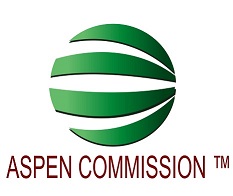Health crises, disease, conflicts, water scarcity, land degradation, and natural disasters displace tens of millions of people each year, and can destabilize societies and political systems. We will stand with the world’s people when disaster strikes or crisis emerges, because that is who we are as Americans. As the world’s leaders in humanitarian assistance, food security and health, the Department and USAID demonstrate the best of American leadership and compassion around the world. Strengthening the resilience of assistance recipients enables U.S. humanitarian assistance to lay the groundwork for long-term political, economic, and social advancements, which will consolidate and protect American investments, produce new opportunities, and project American values and leadership. The U.S. President’s Emergency Plan for AIDS Relief (PEPFAR), active in more than 60 countries, catalyzes a global response to control the HIV/AIDS epidemic. Innovative programs in nutrition and women’s health support USAID’s efforts in preventing maternal and child deaths. In addition, the Global Health Security Agenda (GHSA) serves as a multilateral and multi-sectoral approach to strengthen capacities to prevent, detect, and respond to infectious threats and public health emergencies of international concern, and to enable national governments to fulfill their obligations under the International Health Regulations (IHR). Strategies for Achieving the Objective The Department and USAID will take the lead on humanitarian assistance globally through policies, multi-sectoral programs, and funding in order to provide protection and ease suffering. We will work through multilateral systems to build global partnerships and ensure compliance with international norms and standards. Additionally, we will promote best practices in humanitarian response, ensuring that humanitarian principles are supporting broader U.S. foreign policy goals. Collaboration with donors and host countries will help identify solutions to displacement, protect people at risk, promote disaster risk reduction, and foster resilience. The Department and USAID will give particular attention to mitigating gender-based violence in emergency contexts. Through efforts in family planning, malaria, HIV/ AIDS, and nutrition, the agencies’ health programs will work to strengthen child and maternal health, a cornerstone of public health, to reduce deaths, preempt pandemics and the spread of diseases, and foster prosperity and stability. These programs will concentrate on countries with the highest need, demonstrable commitment, and potential to leverage resources from the public and private sectors. The Department and USAID will provide global leadership, support country-led efforts, and innovate to implement cost-effective and sustainable interventions at scale to prevent the spread of the HIV/ AIDS epidemic and mitigate its effects. Working with health ministries, partners, and communities, our programs will scale up effective, equitable, locally adapted, and evidence-based interventions to reach poor, marginalized, and vulnerable people to prevent and treat infectious diseases. Cross Agency Collaboration In order to achieve this objective, we will collaborate with the our interagency partners including the Departments of Treasury, Defense, Commerce, Agriculture, Health and Human Services, Labor, Peace Corps, and the Millennium Challenge Corporation. Other partners include the American Chambers of Commerce, foreign development assistance agencies, multilateral development finance institutions, and NGOs. Risk The risks to this objective include insufficient transparency and accountability in partner countries and implementing partners, strains that could lead to instability in refugee-hosting nations, and nations that seek to subvert U.S. leadership or otherwise seek to promote their own interests. Other risks to our efforts include reluctance of partner governments to comply with IHR and contribute their fair share, economic downturns, natural disasters, and conflict. PROMOTE AMERICAN LEADERSHIP THROUGH BALANCED ENGAGEMENT By September 30, 2019, U.S. global leadership and assistance to prevent child and maternal deaths will annually reduce under-five mortality in 25 maternal and child health U.S. Government-priority countries by an average of 2 deaths per 1000 live births per year as compared to 2017. (APG) By September 30, 2019, new infections are fewer than deaths from all causes in HIV-positive patients in up to 13 high-HIV burden countries through leadership by State and implementation by USAID; the U.S. Department of Health and Human Services and its Agencies, including the Centers for Disease Control and Prevention, the Health Resources and Services Administration, and the National Institutes of Health; the Departments of Defense, Labor, and Treasury; and the Peace Corps. (APG) By 2022, State increases its systematic response to gender-based violence in new and evolving emergencies by maintaining or increasing the percentage of NGO or other international organization projects that include dedicated activities to prevent and/or respond to gender-based violence. By 2022, USAID increases its systematic response to gender-based violence in emergencies by increasing the percentage of proposals it receives from non-governmental organizations that include protection mainstreaming to 95 percent.
|
Endorsed by the

World Markets
-- Teddy Roosevelt, 26th President of the United States of America
Universal Peace Congress Commission ™ All Rights Reserved 2024
IBS INTERNATIONAL BOARD OF STANDARDS
Universal Peace Congress Academy of International Relations, Philosphy Politics and Innovation - International Political Foregin Relations Public Policy Council. The Aspen Commission ™ is an Association Registered in Colorado and is also a listed as an Limited Company CO USA.
CEO Commission Join Mission Ethics Home Continuing Ed Government Jobs Awards Degrees Press Release Congress Condemning Violence Certification newspapers Diplomacy markets Links Careers Disclaimer
Accreditation Bodies: www.GAFM.com * www.GAFM.org * www.CertifiedProjectManager.eu * www.AAFM.org * Certified Project Manager * Certified e-Commerce Consultant * Royal Law Society * Royal Business Society * Royal Business College * Royal Fellows * Royal Economics Academy * Oxford Law School * AAFM * Certified International Project Manager *